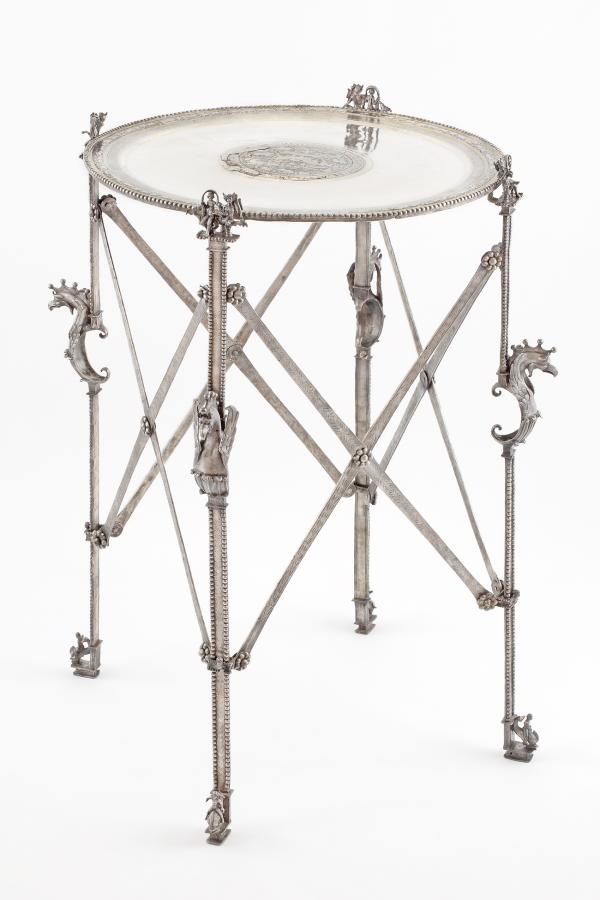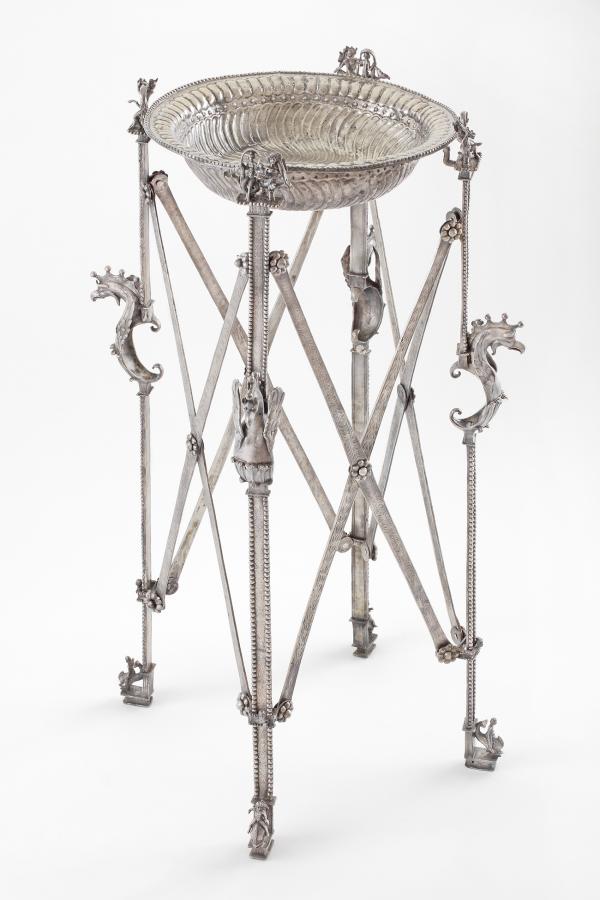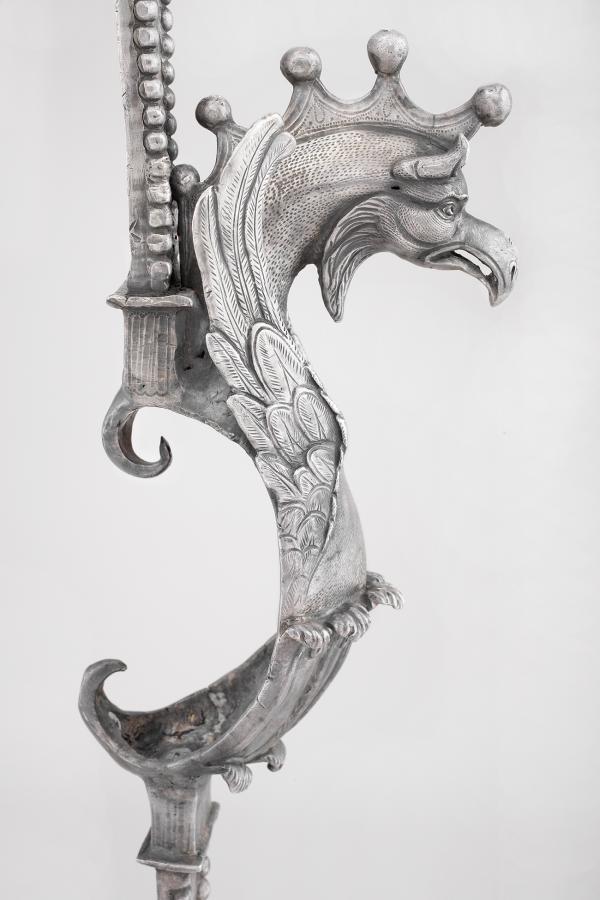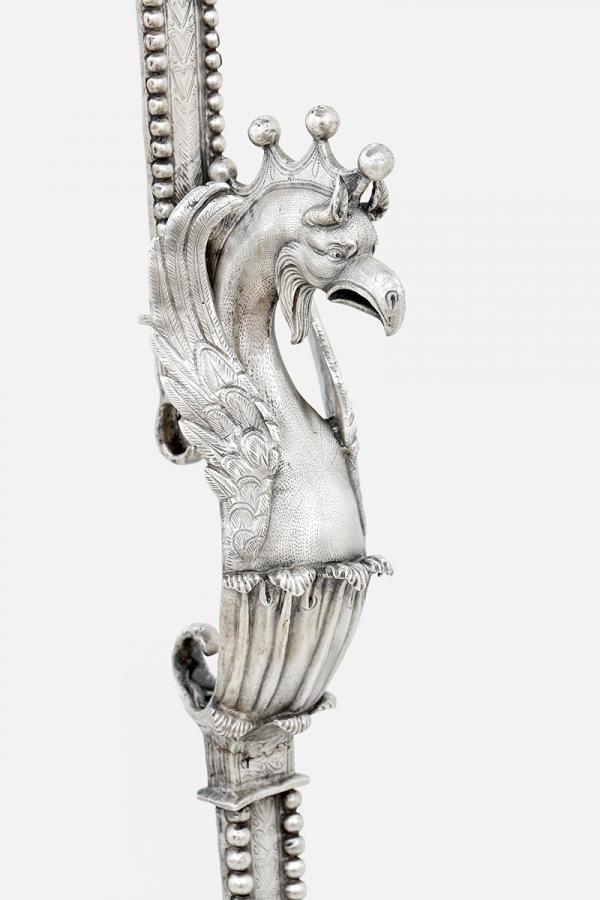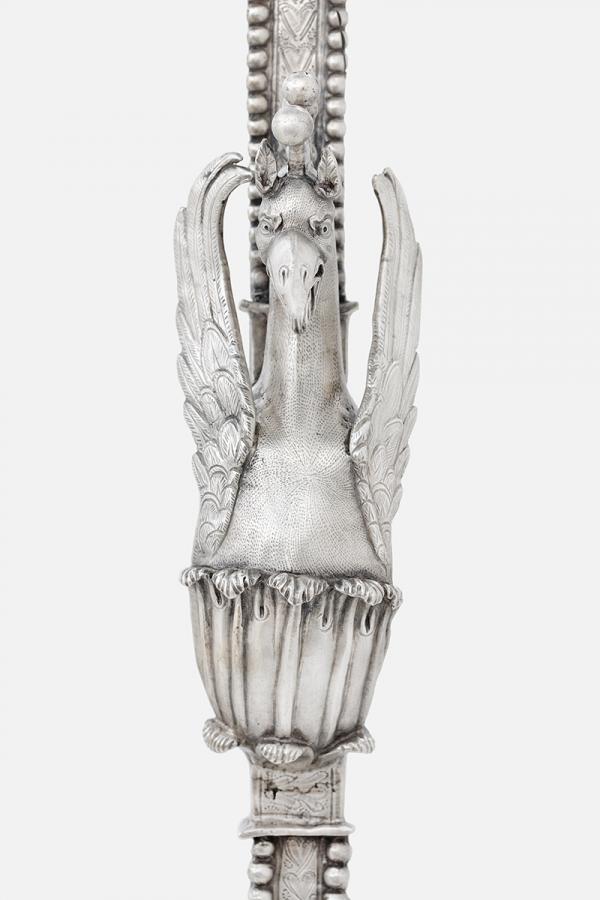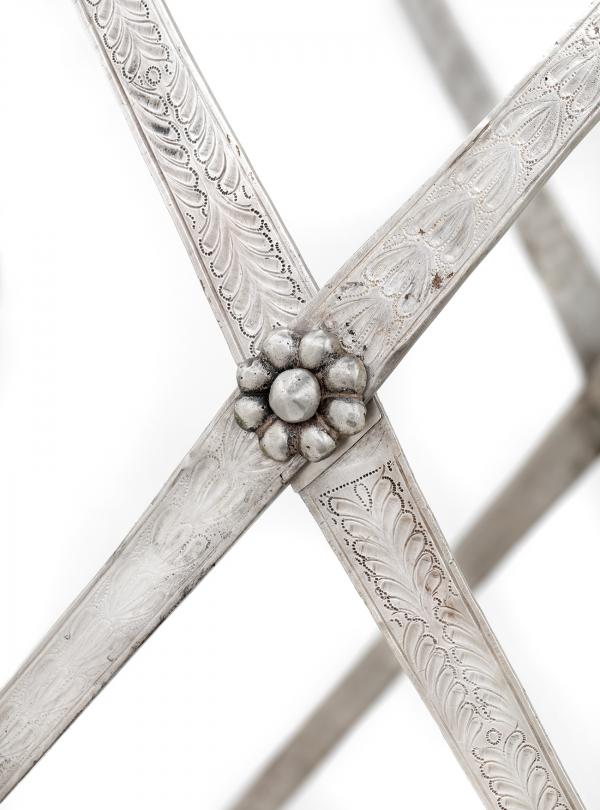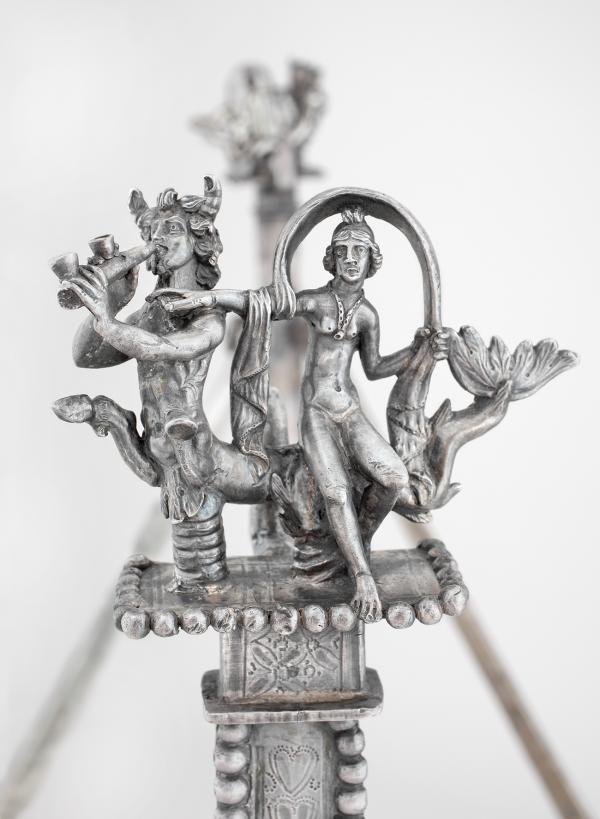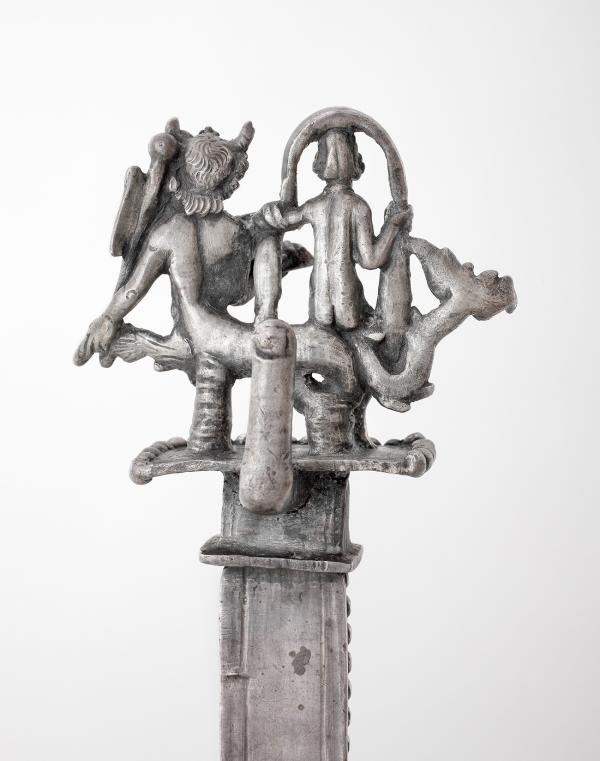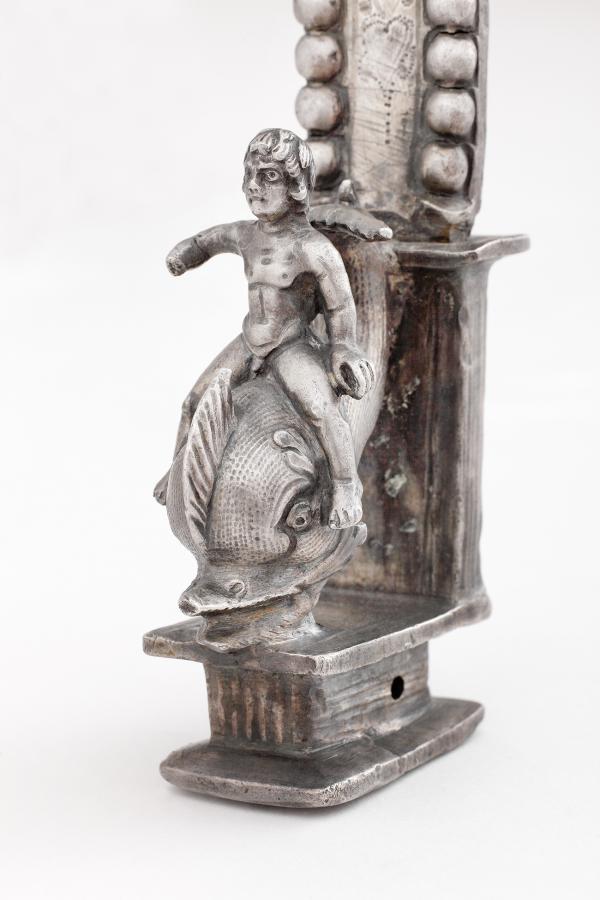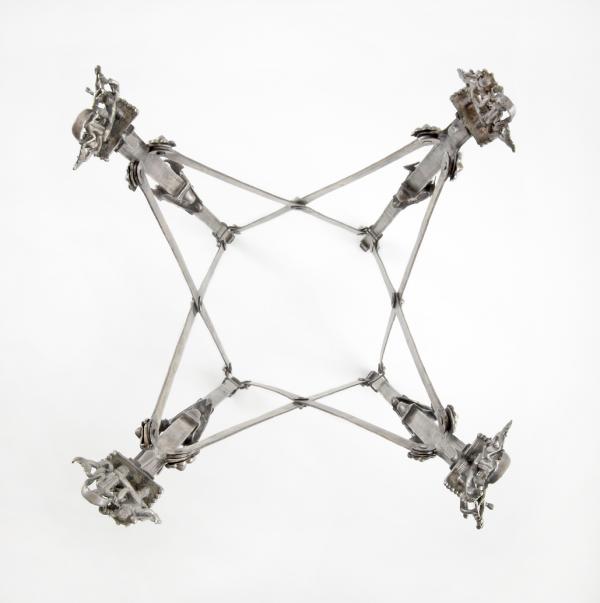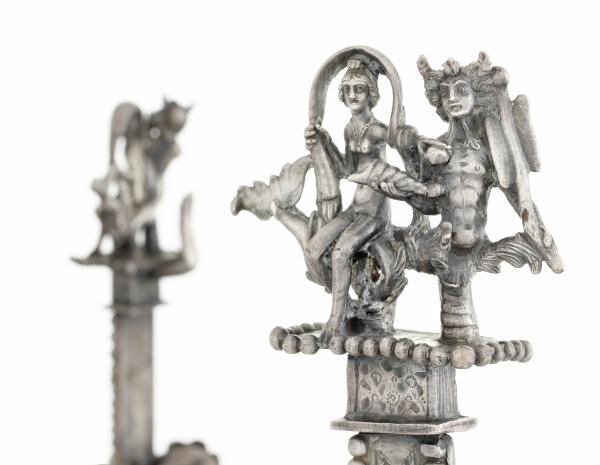The Kőszárhegy silver stand
The four-legged stand (quadripus) discovered in Kőszárhegy is the only existing late Roman silver stand. It is the highest and heaviest of the known folding stands. Groups of statues representing sea centaurs (tritons) and sea nymphs (nereids) decorate the finial of the legs. Sea gryphons rising from flower cups constitute its curved holders and the bases are decorated with figures of Eros riding on dolphins. The sculptural decoration of the stand recalls the sea, while its Greek mythological figures bring Aphrodite to mind, which suggest the original function of the object—it probably was used as a wash stand. The lady who saw her own face reflected in the water of the wash basin placed on this stand could easily identify herself with Aphrodite’s beauty. Yet its former owners probably tried to utilize the advantages of the adjustable span; thus it could carry different sized dishes laden with food at banquets.
Its fragments were discovered when a dried-out tree was cut down in Kőszárhegy in 1878. The find included two legs and three whole transverse pieces, as well as half of one, which together constitute half of the four-legged stand. The other two legs and transverse pieces of the exhibited stand are reconstructions.
Primarily its site, but also the time when it was made (4th century), its size and its stylistic similarity to the vessels of the Seuso treasure indirectly suggest that the stand must have originally belonged to the dining and/or washing set of the Seuso treasure.
Height: 113 cm
Weight: the remained fragments are 10 kilograms, in its original state it was 20 kilograms
Material: silver of 91–96% purity















